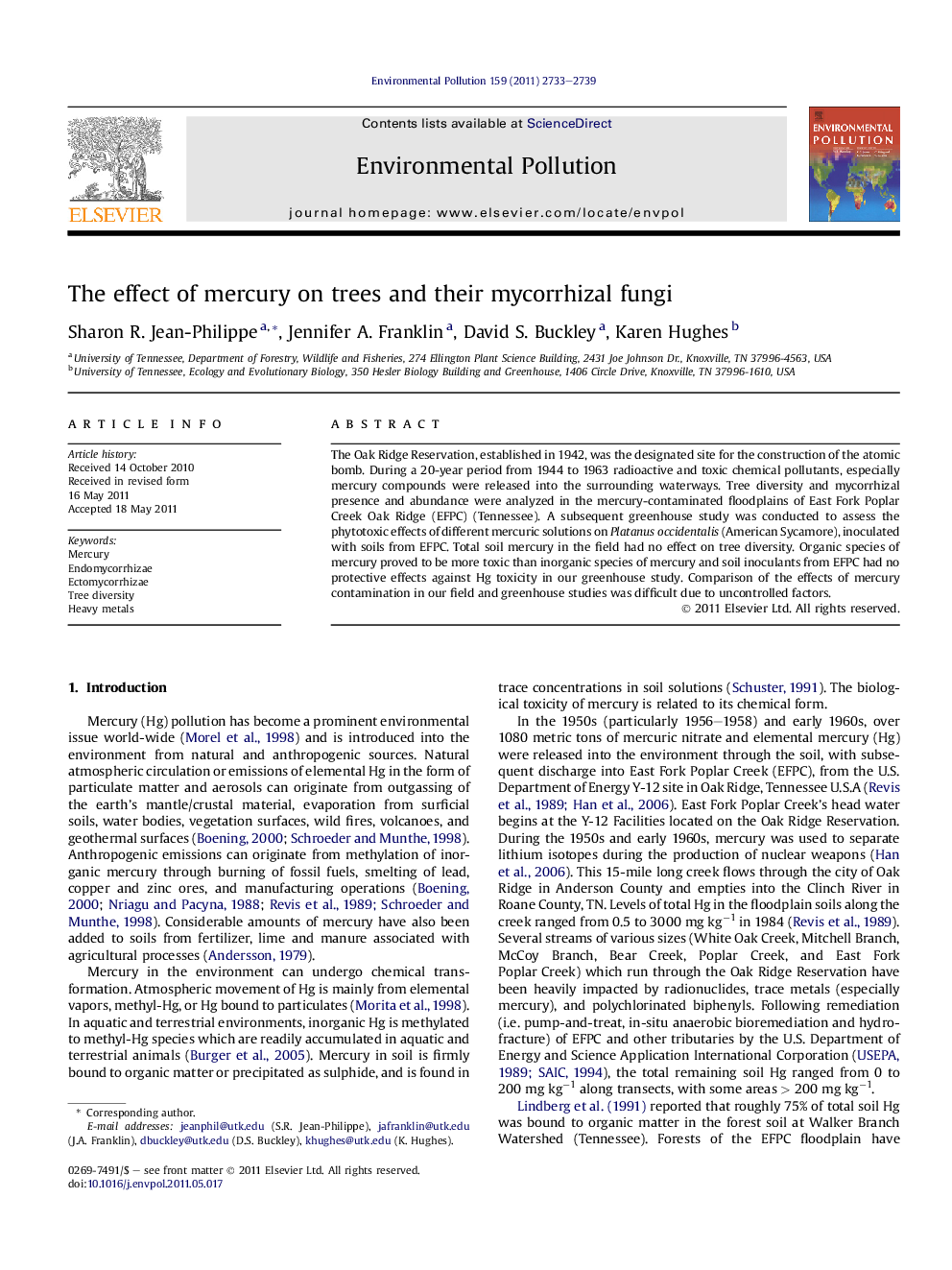| Article ID | Journal | Published Year | Pages | File Type |
|---|---|---|---|---|
| 6319182 | Environmental Pollution | 2011 | 7 Pages |
The Oak Ridge Reservation, established in 1942, was the designated site for the construction of the atomic bomb. During a 20-year period from 1944 to 1963 radioactive and toxic chemical pollutants, especially mercury compounds were released into the surrounding waterways. Tree diversity and mycorrhizal presence and abundance were analyzed in the mercury-contaminated floodplains of East Fork Poplar Creek Oak Ridge (EFPC) (Tennessee). A subsequent greenhouse study was conducted to assess the phytotoxic effects of different mercuric solutions on Platanus occidentalis (American Sycamore), inoculated with soils from EFPC. Total soil mercury in the field had no effect on tree diversity. Organic species of mercury proved to be more toxic than inorganic species of mercury and soil inoculants from EFPC had no protective effects against Hg toxicity in our greenhouse study. Comparison of the effects of mercury contamination in our field and greenhouse studies was difficult due to uncontrolled factors.
⺠Heavy metals effects on ecosystems may be difficult to pinpoint in the field. ⺠Toxic effects of mercury depend on its chemical form and concentration. ⺠Mycorrhizae have been shown to be increase heavy metal tolerance in host plant.
